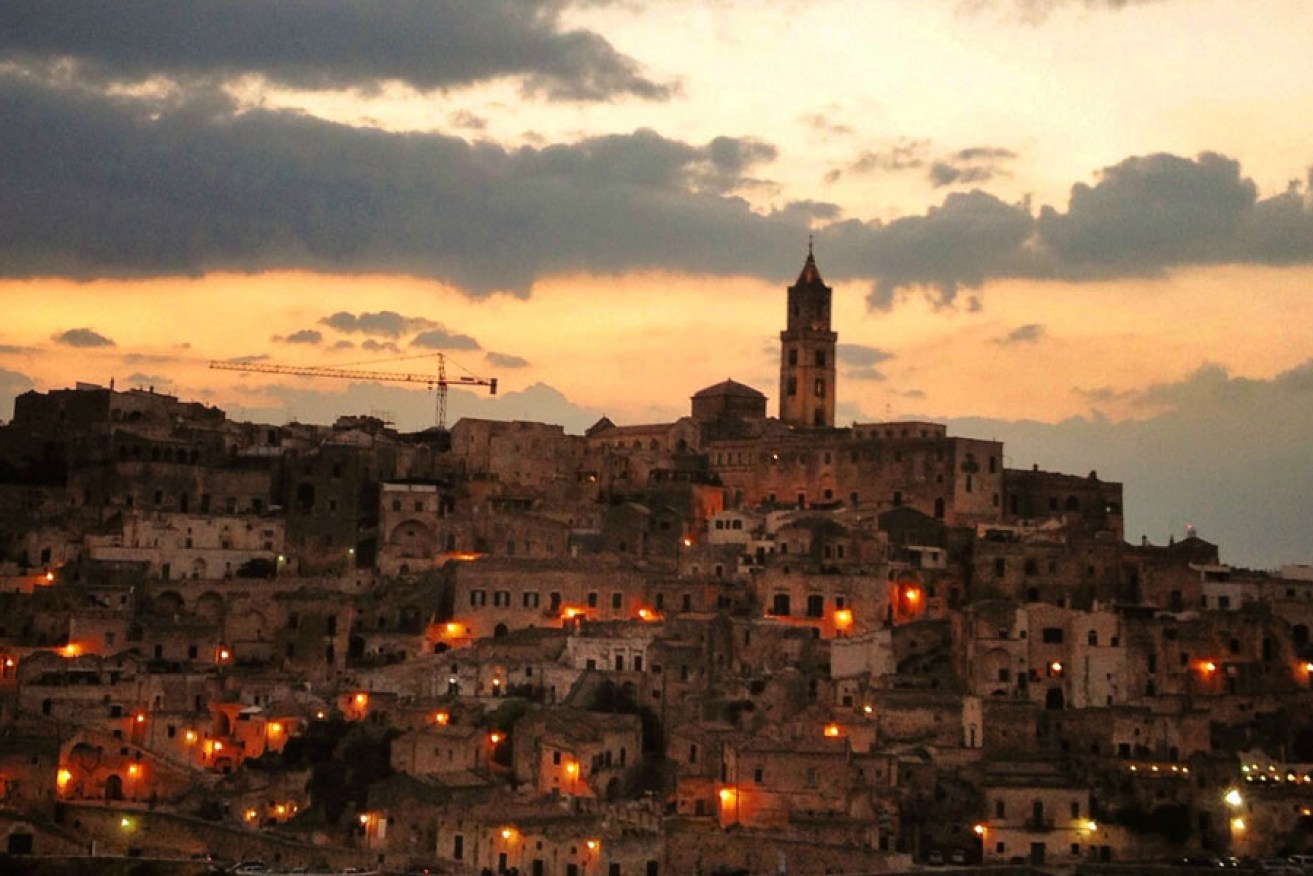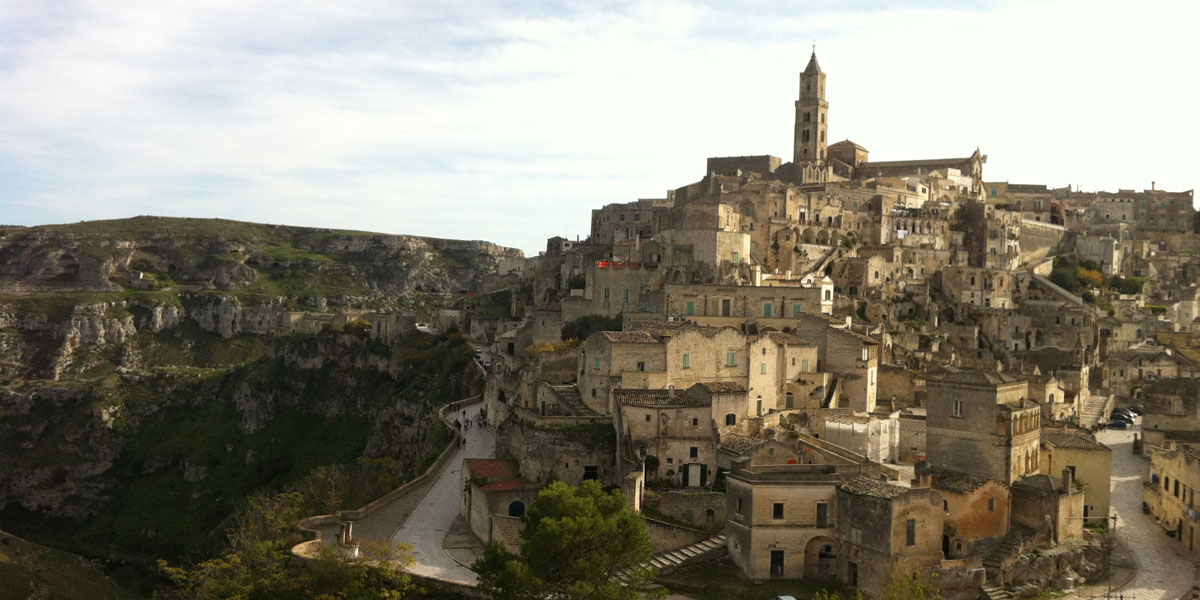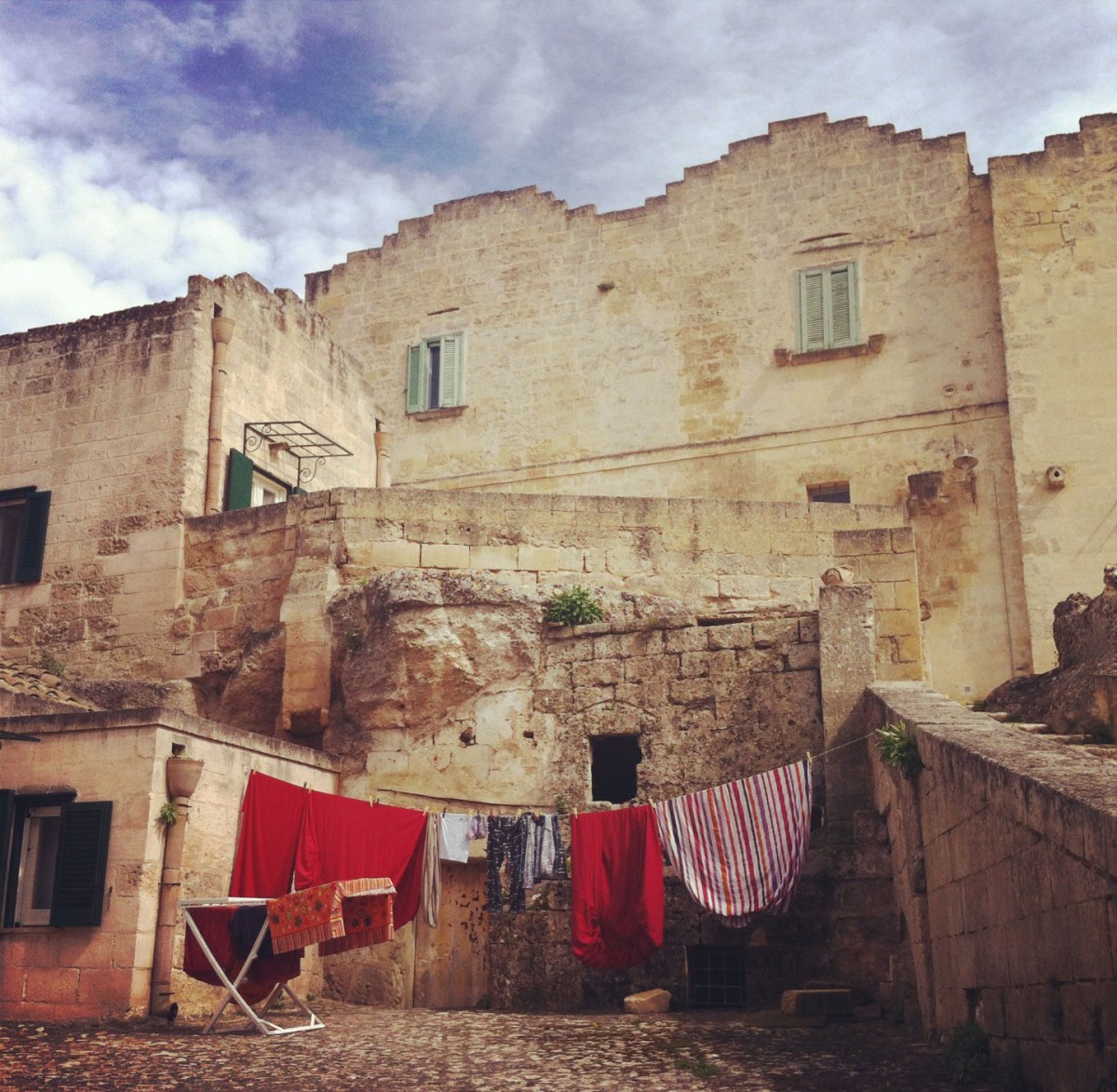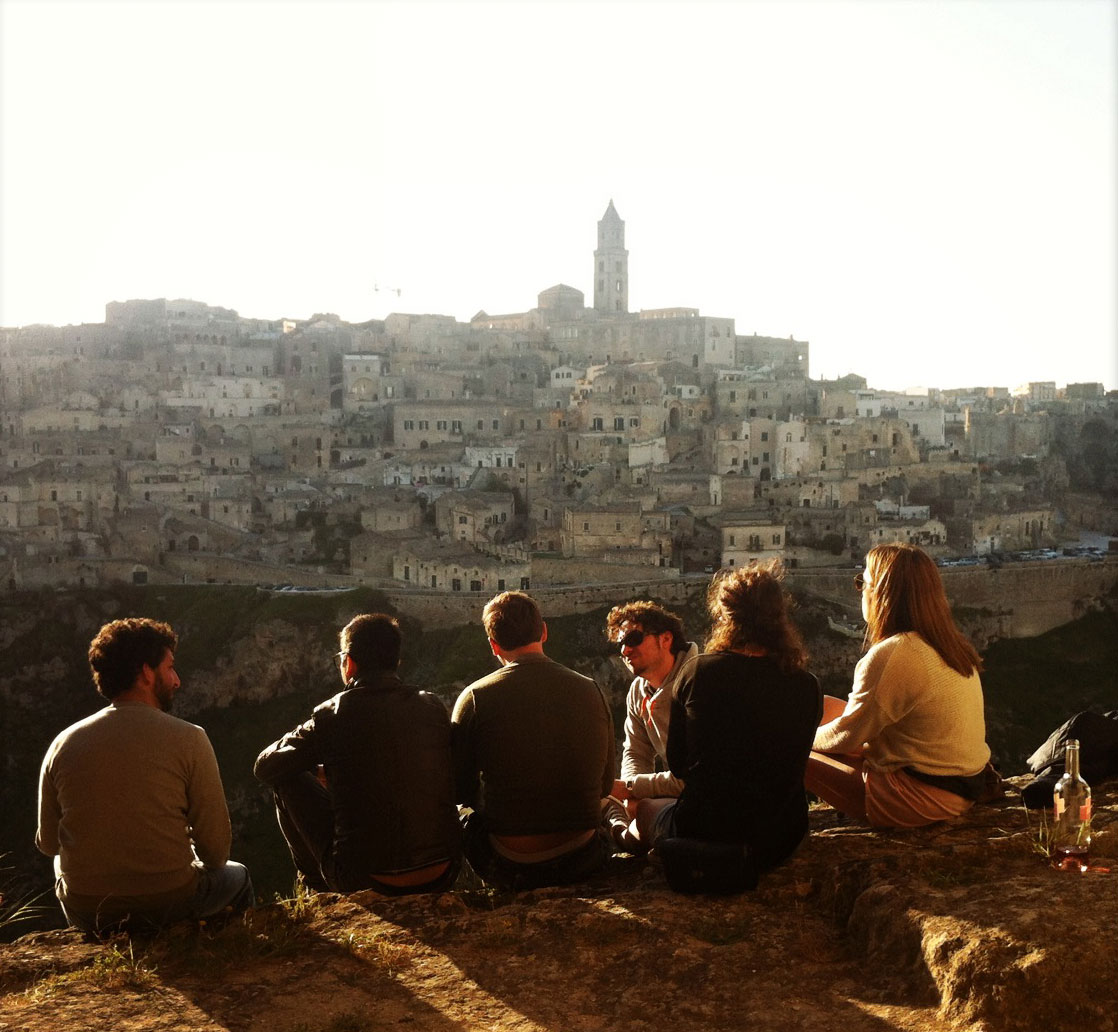Ancient treasures in undiscovered Italy

The stunning city of Matera at sunset. Photo: Candice Keller
This ancient city probably isn’t on your Italian holiday itinerary – but it should be, writes Candice Keller.
Matera: the third oldest city in the world. A living labyrinth of cave homes, a UNESCO world heritage site – and the local tomatoes are the sweetest I’ve ever tasted.
Yet this Italian town is virtually unknown, even to Italians.
In the southern region of Basilicata, in the so-called arch of the boot, lies Matera – a magical city that is about two million years old and still bears the scars and fossils of a long, tortured history. Despite its unbelievable beauty and historical importance, for decades Matera was considered la vergogna of Italy – the shame of the nation.
In the 1950s it was discovered that in many of the 3000 cave homes, up to 10 people lived together with animals, no proper hygiene, no sewerage or water filtration systems. The government intervened and evicted most residents from the Sassi (loosely translated as stones), nearly ending continuous inhabitation that began in Palaeolithic times.
Today the cave dwellings, which were half carved out by the sea millennia ago and half built into the tufo rock, are arguably the greatest drawcard of the city. Since the ’80s, regeneration projects have returned life to the historical centre and many of the caves have been restored or reborn as boutique hotels, evocative bed and breakfasts or cafes serving local fare. Still a third of the homes remain abandoned. They generate a calmness and energy that must be felt.
Peppered throughout the Sassi are the rock churches, or chiese rupestri, that reveal frescoes and details of Byzantine monastic culture or architectural features from Roman or Baroque times. There are about 150 rock churches in and around Matera. At the city’s highest point there is also a castle, the seat of power of Count Gian Carlo Tramontano, who was murdered by rebellious masses for introducing excessive taxes in the 16th Century.
But the most breath-taking, authentic part of Matera – discounting the peace that comes with sunrise or sunset over the Sassi – is the lifestyle. Materans know about living la vita bella. They value social connection, good food, tradition and time to promenade.
The heart of the city, as with most regional Italian centres, beats in the main piazza or square where you will find Signora Maria, age 87, regaling anyone about her day’s cooking or her adventurous younger years. Around another corner and down a stairwell you will find fresh wild figs growing ad hoc along the stone paths. Alongside the main cathedral of the town is a bustling co-working space, Casa Netural, dedicated to up-skilling and empowering the local community so residents can overcome the economic downturn.
It’s true that Matera is in one of the poorest regions of an unstable country. Unemployment rates are high. Manufacturing industries are closing. Still, these people smile and appreciate the small things. Friends. Family. A simple pasta dish with fresh tomato, basil and cacioricotta cheese. Agriculture provides the main income outside of tourism and so the produce is fresh, organic without boasting and so so flavoursome.
This year Matera won the mantle of European Capital of Culture for 2019. It’s an honour that goes to two cities each year to reward long-term programs of innovation, artistic and cultural excellence and tourism potential. With three coastlines within an hour’s drive and the legacy of Mel Gibson’s The Passion of the Christ and upcoming filming of Ben Hur starring Denzel Washington, this diamond in the rough will not be undiscovered for much longer.
Matera is a small city of 60,000 inhabitants with luxurious bonuses – 5-star hotels with spas, yoga classes in historic caves – and a raw natural beauty from the adjacent ravine.
Also visit the twin mountaintop towns of Castelmezzano and Pietrapertosa, which look like nativity scenes and are also joined by a giant flying fox or the wine region of the Vulture mountain-range. But above all, breathe in the Materan way – live slowly, love fully and eat the fruit from the tree.
Places to stay
L’Albero di Eliana, bed and breakfast (via Gradoni Municipio, 14 – Piazza Sedile)
– An eco-friendly “dream and breakfast” nestled in the Sassi where you can wake up to the sunrise over the ravine. It is a home away from home with interesting details added by guests who have stayed.
Sextantio Le Grotte della Civita (via Civita, 28)
– A touch of luxury among evocative history. These 18 caves have been completely renovated while retaining original materials and style. A real getaway.
Places to eat
Osteria Malatesta (via San Biagio, 45)
– Want delicious home-cooking, authentic flavours and a local experience? Malatesta is a feast for the senses and a Materan institution. Pasta for 6€ – need we say more?
L’Arturo (Piazza Sedile)
– The best meats and cheeses of the region served in a funky artisan bar, this is a great place for aperitivo, lunch or a grazing dinner. Try their goat cheeses for an earthy, salty treat.
Things to do
Palombaro Lungo (Piazza Vittorio Veneto)
This is the second largest underground cistern in the world and it’s one of the factors that earned Matera its UNESCO world heritage status. A great display of early engineering and innovation.
Madonna de Idris (Piazza San Pietro Caveoso)
This Rupestrian church is built inside a rocky spur that pierces the Materan skyline within the Sassi. Inside are archaic frescoes and from this high point you have a spectacular view of the Sassi and the ravine.
Getting there
Fly into Bari (Bari Palese airport) from the European capitals, then take the shuttle bus from the airport to Matera centre. Alternatively, there are daily buses from Rome (Marozzi) or Naples (Marino).
Candice Keller is a South Australian journalist who has returned home after living in Matera for two years.







